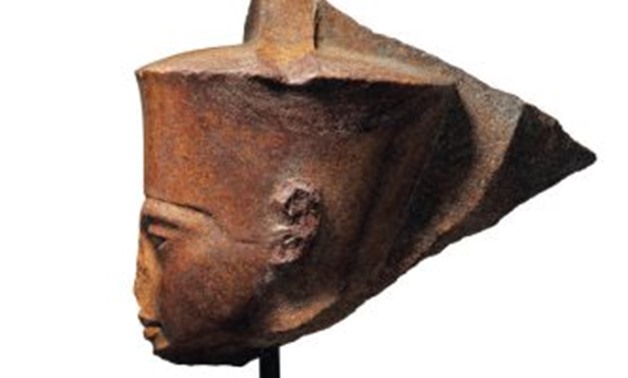
A 3,000-year-old stone statue bearing the features of the most famous ancient Egyptian king Tutankhamun - Christie’s auction London.
CAIRO - 4 June 2019: A 3,000-year-old stone statue bearing the features of the most famous ancient Egyptian king Tutankhamun is expected to be auctioned at £4 million in Christie’s auction London on July 4.
Tutankhamun bust shows the golden king with almond-shaped eyes and drooping lower lip; it shows Tutankhamun as Amun, the most important god of the era.
It is the first time that a piece owned by a private collector has appeared on the open market since 1985. Christie’s experts believe that king Tut's bust was located in the past at the Temple of Karnak in Upper Egypt.
Laetitia Delaloye, head of the antiquities department at Christie’s London, said to The Financial Times that “the beauty of the lines and the way it is carved are a testament to the Amarna style.”

Tutankhamun’s statues very rarely appear on the market, because most of them are shown in museums.
Egypt has regulated the sale of its cultural heritage since 1835, and brought in laws in 1983 banning the removal of artefacts from the country. More recently Egypt has strengthened legislation in a bid to clamp down on the trade in illicit objects.
It is not known when and where the Tutankhamun head was found; most probably it goes back to the 1960s. It subsequently passed through the hands of dealers until bought by the current owners in 1985.
Christie’s said it was in continuous contact with the Egyptian authorities about its planned sales of antiquities, adding that it would send details of the head and other artefacts in the sale to the authorities on publication of the sale catalogue this week.
Tutankhamun was born in the 18th Dynasty around 1341 B.C. and was the 12th pharaoh of that period. Tutankhamun did not accomplish much himself; he was placed on the throne when he was a child, and Egypt’s prosperous era was beginning to decline with the rise of Pharaoh Akhenaten and his new cult.
Sir Howard Carter, British archaeologist and Egyptologist, had made it his life’s quest to find the tomb of King Tutankhamun.
When Carter had begun to work in Egypt in 1891, most of the documented Pharaohs had their tombs discovered. One, however, proved to be elusive; King Tutankhamun, whose resting place had yet to be found and who Egyptologists knew very little about.
With the end of World War I, Carter made it his goal to be the first to uncover the tomb of Tutankhamun. Carter had worked in Egypt for 31 years since he was 17, using his skills as an artist to copy inscriptions from walls.
He would then become appointed inspector-general of monuments in Upper Egypt. In 1907, he started to work for George Herbert, the fifth earl of Carnarvon, who would aid him in his quest to uncover the lost tomb of Tutankhamun.
Carter was certainly dedicated, spending massive amounts of money and time in order to track down where the tomb might lie.
With Lord Carnarvon as his sponsor, he began working earnestly at excavating the Valley of Kings. Alas, even after five years of work, Carter wasn’t able to report back on anything substantial.
He refused to give up however, tirelessly working to fulfil his quest, and soon enough, Carter would be rewarded beyond his imagination.
The discovery of steps beneath the sand on November 1, 1922 was a breakthrough for Carter. At long last, his tireless search for Tutankhamun would finally bear fruit.
Carter announced the discovery on November 6, and it took three weeks until he could begin work on excavating into the tomb.
Workers exposed all of the steps and the sealed doorway into the tomb, which at one point had been broken in by tomb robbers but resealed again, leading to hope that the contents had not been plundered.
Carter finally entered on November 25, finding evidence of resealed holes but noting that it had likely been thousands of years since anyone had entered again.
When Carter made a hole inside the sealed door and peeked inside, he was left astounded. Gold flooded his senses, and animal statues, rich perfumes, piles of ebony, childhood toys and the Pharaoh himself adorned the room alongside countless other treasures.
It was a bounty of riches the likes of which had never been seen before. Carter couldn’t have anticipated this finding in his wildest dreams.


Comments
Leave a Comment